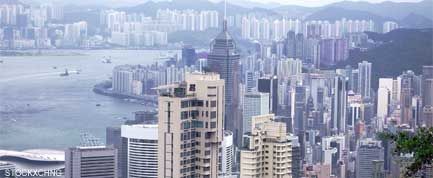
Cities get drier as they grow geographically larger, a new study suggests.
Water-absorbing soil is covered, which leads to less moisture in the atmosphere and thus less rain, the researchers speculate after finding a link between reduced winter rainfall and the conversion of vegetated land to asphalt, roads and buildings in China.
“We don’t see the same impact in summer months, in part because the effect of the Asian monsoon masks the effects of urbanization,” said study leader Karen Seto, an environmental scientist at Stanford University. Monsoon moisture typically originates far from where it falls.
The findings, announced today, were detailed in the May 15 issue of the Journal of Climate.
In a previous study, Seto and her colleagues analyzed satellite imagery and found that urban areas in China’s Pearl River Delta tripled in size from 1988 to 1996. In the new study, the researchers compared the rapid urban growth with monthly temperature and rainfall data from 16 meteorological stations. They found a direct correlation between the rapid growth of cities and reduced precipitation during the winter seasons for the years analyzed.
“When cities are still relatively small, we don’t see this pattern emerging,” Seto said. “It happens when cities get very large. But that’s the part that I think is alarming, because we see large-scale city development all over China and throughout the developing world.”
- Weather 101: All About Wind and Rain
- Cities Cover More of Earth than Realized
- Timeline: The Frightening Future of Earth
Sign up for the Live Science daily newsletter now
Get the world’s most fascinating discoveries delivered straight to your inbox.












